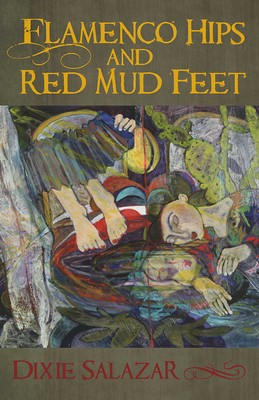
- We will send in 10–14 business days.
- Author: Dixie Salazar
- Publisher: University of Arizona Press
- ISBN-10: 0816528519
- ISBN-13: 9780816528516
- Format: 13.9 x 22 x 0.8 cm, minkšti viršeliai
- Language: English
- SAVE -10% with code: EXTRA
Reviews
Description
"Duality" is at the center of Flamenco Hips and Red Mud Feet, a striking collection of poems both intimate and grand. The poet, Dixie Salazar, has spent a lifetime forging her own identity out of two cultures: "On one side was my father's world: Spanish speaking from las montañas. On the other side was my mother's world: a deep Southern drawl wafting from the magnolia and chinaberry trees." As her poems reveal, she is a product of both cultures but not completely at home in either one.
In the two sections of the book-"Inside" and "Outside"-parallelism and symmetry interact with themes both public and private. Flamenco Hips and Red Mud Feet presents thirty-nine poems in free verse and traditional poetic forms, especially the sonnet and adaptations of the sonnet. The sonnet-usually consisting of the octet (eight lines) that sets up the main idea of the poem and the sestet (six lines) that resolves, answers or completes the poem-is a natural form for a poet whose identity is divided. Double sonnets and "double-linked sonnets doubled" reflect the duality the poet feels inside her skin. And the poems written to and for a "lost sister" reinforce the theme.
EXTRA 10 % discount with code: EXTRA
The promotion ends in 23d.09:48:46
The discount code is valid when purchasing from 10 €. Discounts do not stack.
- Author: Dixie Salazar
- Publisher: University of Arizona Press
- ISBN-10: 0816528519
- ISBN-13: 9780816528516
- Format: 13.9 x 22 x 0.8 cm, minkšti viršeliai
- Language: English English
"Duality" is at the center of Flamenco Hips and Red Mud Feet, a striking collection of poems both intimate and grand. The poet, Dixie Salazar, has spent a lifetime forging her own identity out of two cultures: "On one side was my father's world: Spanish speaking from las montañas. On the other side was my mother's world: a deep Southern drawl wafting from the magnolia and chinaberry trees." As her poems reveal, she is a product of both cultures but not completely at home in either one.
In the two sections of the book-"Inside" and "Outside"-parallelism and symmetry interact with themes both public and private. Flamenco Hips and Red Mud Feet presents thirty-nine poems in free verse and traditional poetic forms, especially the sonnet and adaptations of the sonnet. The sonnet-usually consisting of the octet (eight lines) that sets up the main idea of the poem and the sestet (six lines) that resolves, answers or completes the poem-is a natural form for a poet whose identity is divided. Double sonnets and "double-linked sonnets doubled" reflect the duality the poet feels inside her skin. And the poems written to and for a "lost sister" reinforce the theme.


Reviews